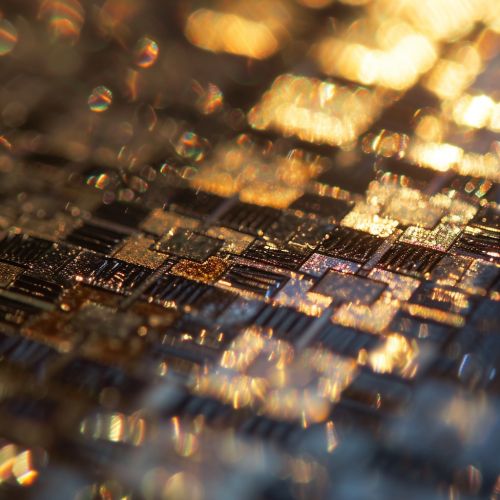P-type semiconductor
Introduction
A P-type semiconductor is a type of semiconductor in which the majority charge carriers are holes. This is achieved by introducing impurity atoms, known as dopants, into the semiconductor material, which have one less valence electron than the atoms of the semiconductor itself. The process of adding these impurities is known as doping. The dopant atoms create vacancies, or "holes", in the valence band of the semiconductor, which can move through the material and carry electric charge.


Doping Process
In the doping process, a small amount of impurity atoms are added to the pure semiconductor material. The type of impurity atom used determines whether the semiconductor becomes P-type or N-type. For a P-type semiconductor, trivalent atoms such as boron, aluminum, gallium, or indium are used. These atoms have one less valence electron than the semiconductor atoms, typically silicon or germanium, which have four valence electrons. When a trivalent atom replaces a silicon or germanium atom in the crystal lattice, it forms a covalent bond with its neighboring atoms but has one less electron to contribute, leaving a "hole". This hole can move through the crystal lattice as neighboring electrons fill it, leaving another hole in their original position. The movement of these holes constitutes electric current.
Charge Carriers
In a P-type semiconductor, the majority charge carriers are holes, while the minority charge carriers are electrons. The concentration of holes in a P-type semiconductor is greater than the intrinsic carrier concentration of the undoped semiconductor material, while the concentration of electrons is less. The majority charge carriers, the holes, are positively charged, while the minority charge carriers, the electrons, are negatively charged. The movement of these charge carriers under the influence of an electric field results in electric current.
Conductivity
The conductivity of a P-type semiconductor is determined by the concentration of holes and their mobility. The hole concentration is determined by the doping level, with a higher doping level resulting in a higher hole concentration and thus higher conductivity. The mobility of the holes, which refers to how quickly they can move through the material under the influence of an electric field, is determined by the properties of the semiconductor material and the temperature. The conductivity of a P-type semiconductor increases with increasing temperature, as the thermal energy allows more electrons to jump into the conduction band and leave behind holes.
P-N Junction
A P-N junction is formed when a P-type semiconductor is joined with an N-type semiconductor. This junction is the basis for many electronic devices, including diodes, transistors, and solar cells. At the junction, the holes from the P-type material combine with the electrons from the N-type material, creating a "depletion region" devoid of charge carriers. An electric field is created across this region, allowing current to flow in one direction but not the other. This property is exploited in devices such as diodes to allow current to flow in one direction only.
Applications
P-type semiconductors are used in a variety of electronic devices. They are used in conjunction with N-type semiconductors in devices such as diodes, transistors, and solar cells. P-type semiconductors are also used in the fabrication of integrated circuits, where they can be used to form P-type metal-oxide-semiconductor (PMOS) transistors. In addition, they are used in light-emitting diodes (LEDs), where they form one side of the P-N junction that produces light when current is applied.
